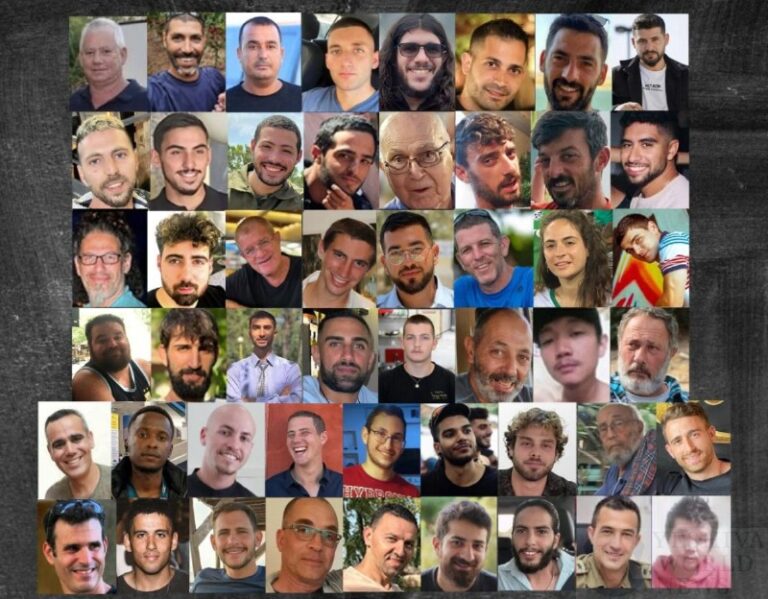Until recently, the approach of Tishrei would always arouse in me a sense of dread and foreboding. The imminent Yom Hadin was only part of it. The other part was the formidable challenge that I knew I would have to face: a pecking, clawing, feathered creature in a plastic crate that had to be maneuvered safely over my head. It was kaparos time again.
I am, otherwise, a confident denizen of the city. I can tactically maneuver through traffic, I can change a light bulb over the stairs, I can handle my teenagers, but standing face to face with a chicken put a queasy feeling in my stomach. My family counts on me for many things, which I thankfully am able to provide them with, but I was never brave enough to lift the little cackler for them without cringing.
I was scared. What if it would move and I would drop it? What if it would jump or squirm away? Would I hurt it if I held it too tight? What if it snapped at me or tried to bite me? What would I do if it flapped its wings? I was beginning to lose my manly pride.
Then I met a man who restored my dignity: an intrepid shochet who has been raising chickens in his Brooklyn backyard for years. He showed me how to hold a chicken in a way that both the chicken and I can be comfortable. And I would love to share his secret with you. As simple as it seems, it was a revelation (as well as a lifesaver) for me.
He began by reassuring me that chickens are by nature docile birds that are not looking for a fight. There is a reason, after all, why they are called chicken. I just needed to muster up the guts to approach them calmly and confidently, he told me, and I would be surprised by how easily they would cooperate. If the chicken is loose, he suggested, that I should approach it from the back. (Chickens have poor night vision; if it’s dark they’ll hardly notice your approach.) Then, in one swift and steady movement, place both hands on the chicken’s back, covering both wings. Grasp it firmly, without squeezing it.
If the chicken is being held by a handler then I should accept it by taking one wing in each hand.
My friend the shochet then showed me how to lift and cross the chicken’s wings. If the chicken was handed to me I am already holding it by the wings. If I had to snatch a loose chicken by pouncing on its back, then, without letting go of it, I must find and lift the wings. (Not too hard. The wings cover the majority of the back and side of the bird.) Then cross the wings, by placing one fully extended wing over the other, and hold the crossed wings from underneath (see picture). In this position my hand is safely away from his beak. (Whew!). By crossing the wings I can comfortably grip both of them with one hand. There is no chance of my dropping the bird or of it jumping or squirming away. With this grip he also cannot flap his wings and I still have a free hand to hold the machzor. This position is comfortable for the chicken too, my friend assured me. Holding a chicken like this is akin to holding a baby from under his arms.
He told me not to squeeze the crossed wings too tight. Chickens need to be able to manipulate their wings a bit in order to breathe. Then, I should flip the chicken over onto its back (see picture). Since the chicken is now resting on the back of my hand he feels secure enough not to fuss. If I suspended him by his feet or wings, as I’ve seen some people do, he would object every time he was jolted. In addition, by laying him on his back I am protected from scratching feet and other inconveniences. And as long as I don’t jerk him, he won’t squawk.
So in simple words, this is what I would like you to do – (I’ll assume you have already calmed and braced yourself for the job.)
Lift both of the chicken’s wings. (Extend them fully.)
Draw them together.
Cross the wings. Place left over right for a right-handed grip (most people), right over left for a left-handed grip (for lefties).
Put your right (left) hand beneath the wings and close your fingers over the wings as shown.
Gently flip the bird onto its back. (The chicken’s body will now be resting on the back of your hand.)
Rotate overhead as you say “Zeh chalifasi.”
REMEMBER – Chickens don’t like being jerked. Always remain calm and treat the chickens gently. They’ll appreciate you for it.
Now that I’ve mastered chicken holding, instead of with apprehension I now face the challenge with dignity and respect. What’s more, I’ve become a sort of coach. When I arrive at a kaparos center I readily pick out the anxious and the fearful. With a few gentle words and several minutes I can help turn a trepid and cowardly fellow into a self-respecting man.
Now, my heart and mind, and those of my fellow compatriots, are free to deal with the real issue of kaparos – teshuva.
About the Author:
The author lives in Brooklyn and studies in the kollel of Mesivta Teferes Jerusalem under Hagaon Rav Dovid Feinstein shlita. His recent book on kaparos — Zeh Kaporosi – The Custom of Kaparos — has been published by Mosaica Press. Other works by the author, available through Feldheim Publishers are: Lekicha Tama – A Lulav and Esrog Buying Guide and Teka Beshofar – Mastering Shofar Blowing. A third book, Chalutz Hana’al – A Concise Overview of the Mitzvah of Chalitza, is available directly from the author.
(YWN World Headquarters – NYC)












12 Responses
Yeah, but WHO IS THE AUTHOR???? What is this, a game of 20 questions??
Reply to No.1
Whats the difference “who is the author”. By reading the article, its clear that he or she is obviously considerably more knowledgeable about how to properly shlug kappuros with a live chicken while minimizing any inyan of tzar ba’eli chayim than most of the rabbonim and askanim who regularly blather about a subect they know little about. While several gadolim have recently come out and argued in favor of alternative means of being yotzeh the minhag of kappuros in ways that avoid noise, smell and sanitation issues of live chickens (such as using coins, fish or other kosher animals) if you insist on using a live chicken, this article is definitely helpul.
Chickens, like all kosher animals, also look forward to being schected and eaten by Bnei Torah. There is no greater reward than than for any animal.
Is this shochet still raising chickens in his Brooklyn backyard ? I’d love to go visit him!
BTW I just spoke to a chicken the other day and he told me that he does not like being held in this manner outlined here. You can go ask the chicken, he is at the 14th Ave. Kaparah center
Is that him in the picture?? is he on the market?? my shviger would like to know if its nogeia
if you look at YWN’s previous article about kaparos (http://www.theyeshivaworld.com/news/General+News/184565/What's+Right+About+kaparos.html), you’ll see who the author is
The author is Avrohom Reit. He is the Martha Stewart of everyday Jewish living. With important works such as: Lekicha Tama: The Lulav and Esrog Buying Guide and Teka BeShofar: A Shofar Blowing Manual.
It bears repeating again, this minhag deserves discontinuation because we are for the most part sheltered, sanitized, city slicker no-nothings. the fellow in picture above in indeed holding a docile bird, a hen. An old factory farm used and abused white Leghorng laying hen. If he picked up a rooster like that, there would be bloddy mess and a Hatzola call. If they had roosters boxed up as they have the other birds, it would be a box of dead shredded birds. The only male birds in the market are those held for breeding, and those that become fryers and buffalo wings. And those have a larger and more lucrative market than the old castoff birds that are the backbone of this FRAUDULENT business. There two ways to continue the minhag as recorded, with hes and shes. Raise your own birds, or go down to the live poultry market for fryers, and do watch out for the talons. But there is nary a way this city large scale. The shochtim surely know this, but they are also there just to make a buck.
I do not see a chicken on its back in any photo. What am I missing here?
But more important, I can tell you, not as a shochet, but as someone who raised chickens since a child in the wilds of the American Midwest, that this is not a very comfy position to put a chicken in. It accomplishes freeing your one hand, but that’s it. It is by FAR preferable to use two hands, as follows, and have either the handler hold the tefilla card for you, or someone who came with you, or lean the card on a table, and use both your hands to support the chicken, in a safe, non-threatening, and nearly hypnotic state for said chicken:
1) With your LEFT hand, reach with your fingers around BOTH chicken’s legs right above his claws and grasp them firmly together. This hand will act as a base beneath the chicken, as his belly rests on your closed fist.
2) Quickly put your RIGHT hand over his back with fingers spread so that wings are gently held down – NOT YANKED UP!!! **The chicken will now be resting comfortably over your fist which is grasping the legs, in a sitting position, while held from above as well. The chicken will be so calm it is amazing. And also, in this position you will actually be able to look him directly in the eye, which is making that emotional connection to the living creature that will be soon serving its purpose while a bit of the fear of the Lord is struck into you through this exchange. That is part of the intention. As an aside,you may be startled to find that chickens have beautiful eyes, often blue. Not common in birds.
Anyway, I urge this practice to be spread. I demonstrate this annually in my neighborhood on Kapparos day, and when others see how it works so magically, they catch on and keep on showing the next people to arrive. The handlers show the method as well. The other type of handling which the shochet demonstrates may be useful and proper for when you need a hand free and to keep the chicken from moving in order to get at the jugular with a knife, to be quite graphic, but we are just trying to hold little Chicky properly for a minute of gentle prayer. WE do not need to yank wings at all!
PASS IT ON!
3…Chickens, like all kosher animals, also look forward to being schected and eaten by Bnei Torah. There is no greater reward than than for any animal. –
Assuming your statement is true, why “Bnei Torah” davka?How about some plain working Jew who takes the N train to work or a woman in her kitchen who make an ehrliche bracha ? Where do bnai Torah come in here all of a sudden?
#10 Don’t feel excluded. Every frum Yid is a Ben Torah!
8. Zults mir moychil zayn but YOU ARE NUTS!
Be m’vatel a minhag because the heathens don’t ‘get it??’ Bist m’shiga?!? Do away with the whole torah chas v’sholom because they don’t get it.
I think YOU don’t get it and that my friend, is a shame!